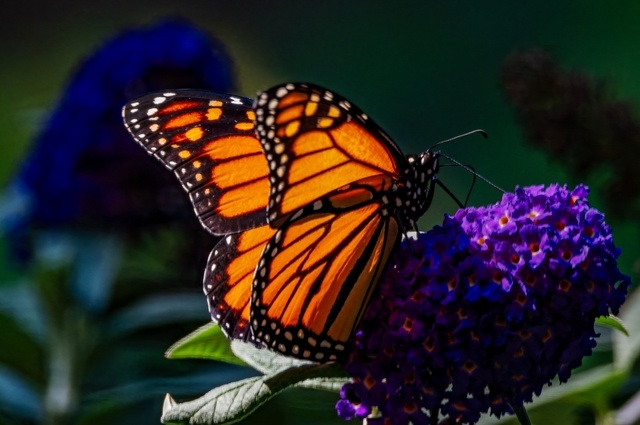
Death is marked in so many ways around the world that an understanding of different rituals can be helpful, particularly in a cross cultural environment. It’s not death, as such, which is a universal experience, but the expression of grief that differs so much between cultures.
Death and dying in Korea
In Korea, where cremation is becoming commonplace nowadays, there is a trend to have the ashes of a loved one refined and turned into colorful beads. While these are not worn, if you visit a Korean home and see these beads on display, they’re likely to be the ashes of a loved one of the homeowner.
Death and dying in China
White is the color of mourning in China, not black, as in the west, and as such, is regarded as unlucky; this is why giving white flowers to a Chinese person is inappropriate. Funeral rituals vary according to the age and status of the deceased but the official mourning period for a Buddhist may go on for 100 days. These rituals are elaborate and may even include hiring professional wailers, in the belief that the young in China no longer know how to show emotion appropriately. These mourners learn facts about the deceased and then start the process of expressing grief at the funeral, sobbing and wailing, opening the doors for any family mourners who feel embarrassed about public displays of emotion.
Death and dying in Japan
Japan is the opposite. Death is seen as liberation and acceptance is more important than expressing oneself. People bring condolence money to wakes in white envelopes tied with black and white ribbon. Bodies are cremated but the ashes then separated from the bones, these remains sometimes being divided up between the temple, the family and even the employer of the departed. The dead are remembered during a three-day holiday in August, Obon when the spirits of ancestors are believed to return to the family home, graves are cleaned and fires lit. This celebration of the dead is common in cultures where ancestor worship is practised. In these cultures, life is seen as cyclical rather than linear and the dead are believed to have powers over the living, such as the ability to bless or curse.
Death and dying in Ghana
Ghana is another example of this belief in an afterlife, with a relatively new tradition of elaborate coffins, which will illustrate the interests, profession or status of the departed but also see them off into the next life in style. A coffin may take the form of an aeroplane, or a Porsche, or a Coca Cola bottle, an animal or even, in dubious taste, a giant cigarette packet. Coffin makers are highly sought after and are regarded as important artists. Funerals are enormous affairs, often costing more than weddings, and advertised on huge billboards so that nobody in the community misses out.
Death and dying in Africa
In other parts of Africa, funeral rituals have evolved from the blending of Christian, Islam and traditional practices. In southern Africa, like Ghana, funerals are enormous affairs involving entire communities. The death is usually announced on the local radio station and mourners will gather over the coming days, coming from surrounding villages and further afield to pray and sing. As numbers swell, catering becomes more complex, with animals slaughtered to feed the crowd. If you are an employer in, say, Botswana or Namibia, you need to allow time off for funerals and if you employ several workers from the same community, you may well lose all of them for days at a time in the event of a death.
Death and dying in the Hindu faith
In the Hindu faith, it is preferable to die at home, surrounded by family. The soul is believed to go on, according to one’s karma. Bodies are cremated quickly, usually within 24 hours, in order to liberate the soul quickly. Mourners wear white, not black, and people do not bring food to the wake, but to a ceremony 13 days after the cremation, at which the soul is liberated and the mourning period considered over. Ashes are scattered over water, the most desirable place being the holy Ganges and a lot of Hindu families living outside India will make the pilgrimage to do this.
Death and dying in the Muslim faith
Muslims bury their dead, rather than cremate them, in the belief that there will be a physical resurrection on the Day of Judgment. The dead are buried facing Mecca and graves are raised above the ground or marked by stones, so nobody walks on them. Because the death of a Muslim is regarded as a loss to the Muslim community overall, it is not uncommon for people who did not even know the deceased to attend funerals. Crying is expected at burials but a loss of control, wailing and shrieking, is seen as inappropriate. A mourning period of up to 40 days follows a burial.
We’ve got over three decades of experience supporting over 1 million people worldwide. We’re passionate about delivering change; how can we help you?
- AI,
- Blog,
- Complex Organizations,
- Cultural Intelligence,
- Cultural Intelligence (featured),
- Diversity & Inclusion,
- Global Leadership & Transformation,
- Global Leadership Development,
- Global Mobility,
- Global Team Collaboration,
- Hybrid Working,
- Influence,
- Performance and Feedback,
- Product News,
- Talent Acquisition & Onboarding,
- Team & Collaboration,

Sue Bryant
Sue Bryant is an award-winning editor and journalist with a deep expertise in travel and cross-cultural topics. As a contributor to Country Navigator, she brings her extensive knowledge in cruising, adventure travel, and global cultural insights to the platform. Sue has been a key voice in the cruise industry, serving as Cruise Editor for The Times and The Sunday Times, and is a published author of over 25 guidebooks. Her work is informed by a passion for experiential travel and an understanding of diverse cultures, making her contributions invaluable to those seeking to navigate the complexities of global business and travel. More posts by Sue BryantRelated articles
Ready to get started?
Kickstart your cultural intelligence journey and try our
no-obligation free trial for 14 days
Join companies already using Country Navigator


COMMENTS